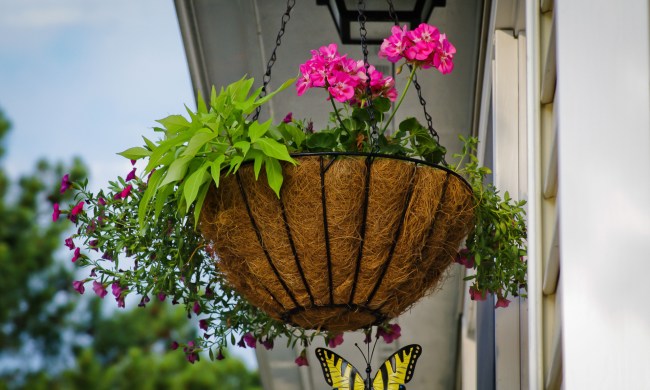When it comes to summer garden tools, the average person is used to packing a bag with their trowel, pruning shears, hoe, and cultivator (claw rake). But what if we told you there’s only one tool you’ll ever need? With a hori hori, summer gardening just got a lot easier (and a lot lighter!). You’ll find yourself doing everything with one tool that you used to do with four — and more!

What is a hori hori knife?
A hori hori is a popular Japanese gardening tool that can do the work of many. It’s roughly a foot long, has a slightly curved blade (one side of which is serrated) and comes to a point at the end. Many hori hori knives sport measurement marks on the blade, which is perfect for helping determine how deep you’re digging down when planting seeds, bulbs, and rhizomes! The name hori hori even lends itself to digging as it’s an onomatopoeia for the sound made when digging in soil.
There are different styles of hori hori that you can purchase, ranging from traditional to more modern. The main difference is typically the handle. More traditional hori hori knives will have bamboo or wooden handles while more modern ones have rubber or plastic handles. The blade itself always remains the same (one serrated side, one straight side), so the choice for you depends on what handle material you prefer.
History of the hori hori
The history of the hori hori knife is pretty fascinating. During the samurai warrior era in Japan, the weapons primarily used in close combat were katana. They were hand-forged, crafted from carbon steel, and heated multiple times to help increase the durability and strength of the sword. The Meiji government issued an edict in 1876 that outlawed katana making, leaving professional swordsmiths struggling to maintain business.
To fill that gap, many smiths began forging tools for kitchen use, woodworking, and — you guessed it — gardening. The legacy of forging swords was clear in the quality and durability of these tools. Hori hori knives were initially developed to help extract plants from the earth, but their use has expanded over the years.

What can the hori hori do?
Because the hori hori was originally designed to retrieve plants from the earth, it’s safe to assume that it can be used in place of a trowel. But what else can it do? With the serrated edge, you can replace those pruners you’ve been carting around. It can easily cut through roots and stems, perfect for cutting back shrubs and bushes (and digging up that pesky little tree growing in the middle of your tomatoes). The straight edge is much more useful for harvesting, as it can easily cut through greens.
Because the hori hori is roughly a foot in length, it’s also great for harvesting in-ground vegetables like potatoes and getting under weeds that keep sprouting. It can even aid in harvesting hay and other animal feeds for the gardener that raises livestock. But it doesn’t stop there.
The hori hori can do almost anything you can think of! It can slice through pumpkin and gourd vines, further protecting your hands from the little prickles, and help harvest clusters of tomatoes on the vine without having to hand pick every single one. Need to remove that dying rose bush? No problem! Instead of switching from tool to tool, simply use the serrated side of the hori hori to cut back the dead branches, then dig into the dirt (once safe to do so) and cut through those roots. The hori hori truly makes gardening easier.
This is the only tool you’ll ever need
The hori hori will have no trouble doing the work of your summer garden tools collection. You’ll want to keep bigger shovels and rakes and hoes on hand, of course, but once you have a hori hori, you’ll realize it’s the only hand tool you’ll ever need. It can plant, harvest, weed, cut, remove roots, dig up stumps, you name it. Not only is it versatile for gardening, but it’s a great tool to bring on a camping trip when you need to cut up tinder and dig holes to… well, you know.
The hori hori takes summer gardening to the next level. Get yours today.


